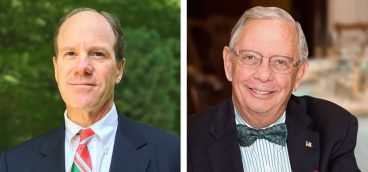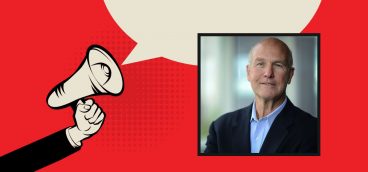A Question of Leadership

Pittsburgh Quarterly asked three local leaders: “What’s the toughest leadership dilemma you’ve ever faced; how did you handle it; and what did you learn from it?”
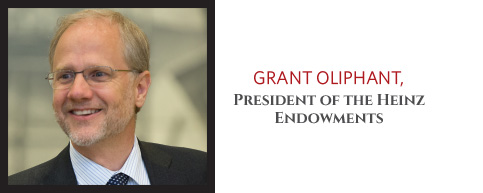
Grant Oliphant, President of the Heinz Endowments
Shortly after I started as president & CEO of The Pittsburgh Foundation in early 2008 the economy was hit by the Great Recession, a monster downturn that slashed the value of our assets, drove down fundraising, and dramatically increased pleas for help from our grantees and the broader community. It was a perfect storm that seemed to hem the foundation in and challenged all my early assumptions about how it could expand its reach and impact.
What helped us navigate this dark time was incredibly simple: a conscious return to purpose. My board, leadership team and I regrouped around a vision for the foundation’s role. It didn’t exist just to raise and manage money, but to have a real and lasting impact in the community we served. It existed to be an advocate for those in pain and need, to take strong and even controversial stands, and to use its position to bring people together across all dimensions of difference and means.
This vision of community leadership helped give rise to programs such as the Pittsburgh Promise, Neighbor-Aid, Pittsburgh Gives, and initiatives to save public radio. It also made us smarter about how to serve and engage our donors and connect them with causes and issues they cared about, which eventually produced a vision for the foundation’s innovative Center for Philanthropy. We discovered an important truth: people respect purpose. While many of our peers around the country shied away from controversy for fear of alienating their donors, we decided to let community be our guide and discovered that our contributors would support us even more when we stood for something meaningful.
It was a time that tested everything our organization felt it stood for, and tested me as a new leader. I was fortunate to be surrounded by a supportive board and a dedicated team. There is no substitute for that. But my enduring lesson, and one that I hope I will forever carry with me, is that our people are always capable of more than we might think and always have more to give when we remain steadfast in our purpose and dedicated in our focus.
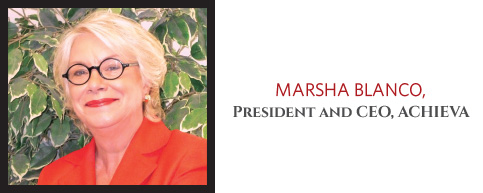
Marsha Blanco, President and CEO, ACHIEVA
The toughest leadership dilemma I have faced occurred early in my career. I was hired to get a struggling organization back on its feet. Morale was low and department directors were not cohesive. In a thorough reorganization, positions were restructured and eliminated. I knew that in order to become the top-notch organization that we are today we needed to recruit and retain the very best talent in our field and instill a common vision and sense of mission that could be embraced by all. We could have trudged along and provided mediocre service to our customers or we could take the bold steps of shaking up the entire organization. Like any decent manager, I took very seriously the prospect of disrupting people’s lives and their livelihoods. The leadership dilemma is oftentimes one of taking the hard or the easier road. With the support of our board of trustees, we took the more difficult route of a thorough restructuring. I learned to ask myself at every turn, “What is in the best interest of ACHIEVA and those whom we serve?” I still regularly ask myself that question when faced with an important decision. I learned that building an extremely talented team that shares a common vision is the cornerstone of success for any organization.
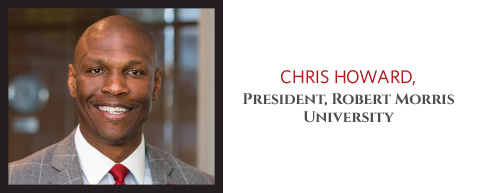
Chris Howard, President, Robert Morris University
When I became president of Hampden-Sydney College in July 2009, there was little to celebrate. Like virtually every other institution of higher learning in the United States, the school had been hit hard by the Great Recession, and the value of the endowment had fallen almost 20 percent. To make matters worse, first-year enrollment, retention, and diversity came in below the goals set by the previous administration. As for me, not only was I a young, first-time president (39 versus the national average of 61), I was also the first African-American to lead this 230-year-old institution.
The first thing I did was let the board, faculty, staff, and most importantly, myself, know I did not have all the answers. We would have to work together and the only way to do so was to be honest about our situation. At my first cabinet meeting, I presented a brief document titled “How I See the World,” a blunt, open, and honest description of my understanding of the challenges we faced as well as an outline of my leadership style. I incidentally presented a similar document when I started at Robert Morris University, though luckily with a lot less gloom and doom. The document was intended to take the guesswork out of how I, the new guy, operate and to reduce the anxiety level of the leadership team. I also spent several weeks meeting with and listening to various constituencies about their ideas on how we could weather this storm.
After two difficult years of sacrifice, tight budgets, and real teamwork, the endowment began to grow, reaching its highest level in the school’s history, while enrollment, retention, and diversity reached all-time highs or close to it. Our strategic plan, while setting a bold course for the future, remained true to the college’s timeless mission. The early years of that presidency taught me the importance of speaking candidly, not pretending you know all the answers, listening to others, and being willing to make unpopular decisions having done due diligence and with the best interests of the institution in mind. The school continues to thrive, a good sign that we got it right.

